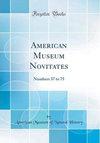Reconstructing the Specimens and History of Howe Quarry (Upper Jurassic Morrison Formation; Wyoming)
IF 1.1
3区 环境科学与生态学
Q3 BIODIVERSITY CONSERVATION
引用次数: 4
Abstract
ABSTRACT In 1934, Barnum Brown of the American Museum of Natural History in New York (AMNH) led a large-scale dinosaur excavation in northern Wyoming, where he had found bones two years earlier. Initially, Brown expected to excavate two skeletons of sauropod dinosaurs, but soon after opening the quarry, the team realized that the site far exceeded their expectations: in the end, they unearthed approximately 3000 bones within six months and sent approximately 144 crates back to the AMNH. Due to the enormous number of bones, the site became world famous as a dinosaur graveyard, and media from all over the United States and abroad reported on the expedition. Soon after, however, the collection shifted away from a curatorial focus. What followed was a history of neglect: inappropriate storage conditions, water and fire damage, collapsing wooden boxes, and deteriorating plaster jackets. Relocation and further excavation of the quarry by the Sauriermuseum Aathal (Switzerland; SMA) from 1989 to 1991 confirmed earlier finds of skin impressions and resulted in the recognition of a novel diplodocid sauropod: Kaatedocus siberi. Given that the amount of bones found by the AMNH far exceeded those found by the SMA, a new project was started in 2017 to reassess the state and scientific value of the historic collections at AMNH. Although most of the bones are heavily fragmented, preliminary results show that overall preservation is still exceptional. Here, we reconstruct the history of the excavation, as well as past conservation and preparation procedures, and provide a report of current efforts to prepare, conserve, and catalog the material that has remained in storage since the 1930s. These current efforts show that historic collections, even after decades of neglect, can be of great and unexpected value, both for research and scientific outreach.重建豪采石场的标本和历史(怀俄明州上侏罗纪Morrison组)
1934年,纽约美国自然历史博物馆(AMNH)的巴纳姆·布朗(Barnum Brown)在怀俄明州北部领导了一次大规模的恐龙发掘活动,他两年前在那里发现了恐龙骨头。最初,布朗希望挖掘出两具蜥脚类恐龙的骨骼,但在采石场开放后不久,团队意识到这个遗址远远超出了他们的预期:最终,他们在六个月内挖掘出了大约3000具骨骼,并将大约144个箱子送回了美国国家博物馆。由于大量的骨头,该遗址成为世界闻名的恐龙墓地,美国各地和国外的媒体都报道了这次探险。然而,不久之后,这个系列就从策展的焦点转移了。随之而来的是被忽视的历史:不适当的储存条件,水和火的破坏,倒塌的木箱,和老化的石膏外套。由saurermuseum Aathal(瑞士)重新安置和进一步挖掘采石场;1989年至1991年的一项研究证实了早期发现的皮肤印痕,并确认了一种新的梁龙科蜥脚类动物:Kaatedocus siberi。鉴于AMNH发现的骨头数量远远超过SMA发现的骨头数量,2017年开始了一项新的项目,以重新评估AMNH历史收藏品的状态和科学价值。虽然大部分骨头都严重破碎,但初步结果表明,整体保存情况仍然很好。在这里,我们重建了挖掘的历史,以及过去的保护和准备程序,并提供了一份报告,介绍了自20世纪30年代以来一直保存在仓库中的材料的准备、保护和编目工作。目前的这些努力表明,即使经过几十年的忽视,历史收藏品在研究和科学推广方面也可能具有巨大而意想不到的价值。
本文章由计算机程序翻译,如有差异,请以英文原文为准。
求助全文
约1分钟内获得全文
求助全文
来源期刊

American Museum Novitates
环境科学-动物学
CiteScore
3.00
自引率
6.70%
发文量
8
审稿时长
>36 weeks
期刊介绍:
The Novitates (Latin for "new acquaintances"), published continuously and numbered consecutively since 1921, are short papers that contain descriptions of new forms and reports in zoology, paleontology, and geology.
 求助内容:
求助内容: 应助结果提醒方式:
应助结果提醒方式:


